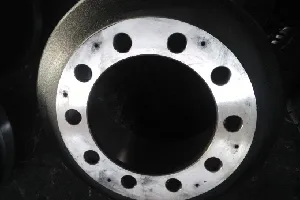
-
 Afrikaans
Afrikaans -
 Albanian
Albanian -
 Amharic
Amharic -
 Arabic
Arabic -
 Armenian
Armenian -
 Azerbaijani
Azerbaijani -
 Basque
Basque -
 Belarusian
Belarusian -
 Bengali
Bengali -
 Bosnian
Bosnian -
 Bulgarian
Bulgarian -
 Catalan
Catalan -
 Cebuano
Cebuano -
 Corsican
Corsican -
 Croatian
Croatian -
 Czech
Czech -
 Danish
Danish -
 Dutch
Dutch -
 English
English -
 Esperanto
Esperanto -
 Estonian
Estonian -
 Finnish
Finnish -
 French
French -
 Frisian
Frisian -
 Galician
Galician -
 Georgian
Georgian -
 German
German -
 Greek
Greek -
 Gujarati
Gujarati -
 Haitian Creole
Haitian Creole -
 hausa
hausa -
 hawaiian
hawaiian -
 Hebrew
Hebrew -
 Hindi
Hindi -
 Miao
Miao -
 Hungarian
Hungarian -
 Icelandic
Icelandic -
 igbo
igbo -
 Indonesian
Indonesian -
 irish
irish -
 Italian
Italian -
 Japanese
Japanese -
 Javanese
Javanese -
 Kannada
Kannada -
 kazakh
kazakh -
 Khmer
Khmer -
 Rwandese
Rwandese -
 Korean
Korean -
 Kurdish
Kurdish -
 Kyrgyz
Kyrgyz -
 Lao
Lao -
 Latin
Latin -
 Latvian
Latvian -
 Lithuanian
Lithuanian -
 Luxembourgish
Luxembourgish -
 Macedonian
Macedonian -
 Malgashi
Malgashi -
 Malay
Malay -
 Malayalam
Malayalam -
 Maltese
Maltese -
 Maori
Maori -
 Marathi
Marathi -
 Mongolian
Mongolian -
 Myanmar
Myanmar -
 Nepali
Nepali -
 Norwegian
Norwegian -
 Norwegian
Norwegian -
 Occitan
Occitan -
 Pashto
Pashto -
 Persian
Persian -
 Polish
Polish -
 Portuguese
Portuguese -
 Punjabi
Punjabi -
 Romanian
Romanian -
 Russian
Russian -
 Samoan
Samoan -
 Scottish Gaelic
Scottish Gaelic -
 Serbian
Serbian -
 Sesotho
Sesotho -
 Shona
Shona -
 Sindhi
Sindhi -
 Sinhala
Sinhala -
 Slovak
Slovak -
 Slovenian
Slovenian -
 Somali
Somali -
 Spanish
Spanish -
 Sundanese
Sundanese -
 Swahili
Swahili -
 Swedish
Swedish -
 Tagalog
Tagalog -
 Tajik
Tajik -
 Tamil
Tamil -
 Tatar
Tatar -
 Telugu
Telugu -
 Thai
Thai -
 Turkish
Turkish -
 Turkmen
Turkmen -
 Ukrainian
Ukrainian -
 Urdu
Urdu -
 Uighur
Uighur -
 Uzbek
Uzbek -
 Vietnamese
Vietnamese -
 Welsh
Welsh -
 Bantu
Bantu -
 Yiddish
Yiddish -
 Yoruba
Yoruba -
 Zulu
Zulu
replacing drum brakes to disc
Replacing Drum Brakes with Disc Brakes A Comprehensive Overview
When it comes to automotive braking systems, performance, safety, and reliability are paramount. Over the years, the debate between drum brakes and disc brakes has led many vehicle owners to consider making the switch from drum brakes to disc brakes. This article explores the advantages of replacing drum brakes with disc brakes and provides insights into the process involved.
Understanding Drum and Disc Brakes
Drum brakes have been a staple in automotive design for many decades. They operate using a set of brake shoes that expand against the inner surface of a spinning drum, creating friction to slow down the vehicle. While effective, drum brakes are often criticized for their performance and heat dissipation capabilities.
On the other hand, disc brakes consist of a rotor (disc) and calipers that house the brake pads. When the brake pedal is pressed, hydraulic force moves the calipers, which then squeeze the pads against the rotor, creating friction. This design allows for better heat dissipation and more consistent braking performance, especially under heavy use.
Advantages of Switching to Disc Brakes
1. Improved Braking Performance Disc brakes offer superior stopping power compared to drum brakes. They respond more quickly when the pedal is pressed, providing more immediate and effective deceleration.
2. Better Heat Dissipation Disc brakes are less prone to overheating than drum brakes. The open design allows air to flow over the rotor, reducing brake fade—an occurrence where the brakes lose effectiveness due to excessive heat.
3. Easier Maintenance Disk brakes are generally easier to inspect and replace. The components are more accessible, which can save time and reduce labor costs during maintenance.
4. Enhanced Safety With improved performance, disc brakes contribute to overall vehicle safety. They maintain their effectiveness in wet conditions better than drum brakes, which can lead to a more reliable braking experience.
replacing drum brakes to disc

5. Aesthetics For car enthusiasts, the appearance of disc brakes can also be an attractive feature. High-performance disc brake systems often come with stylish calipers and rotors that enhance the overall look of the vehicle.
The Replacement Process
Replacing drum brakes with disc brakes is a significant but manageable task. It generally involves several steps
1. Assessing Compatibility First, determine if your vehicle is compatible with disc brake installation. Some vehicles may require extensive modifications, while others can accommodate disc brakes with minimal changes.
2. Gathering Necessary Parts Purchase a conversion kit that includes the necessary components, such as rotors, calipers, brake pads, and mounting hardware.
3. Removal of Drum Brakes Carefully remove the existing drum brake assembly. This involves loosening the lug nuts, detaching the drum, brake shoes, and associated hardware.
4. Installation of Disc Brakes Follow the instructions provided with the conversion kit to mount the new disc brake assembly. This includes installing the rotor, caliper, and brake pads.
5. Testing Once installed, it’s crucial to test the brakes to ensure they function correctly. Take the vehicle for a slow drive and gradually apply the brakes to assess performance.
Conclusion
Upgrading from drum brakes to disc brakes can significantly enhance your vehicle's braking performance and safety. While the process requires some mechanical knowledge and effort, the benefits far outweigh the challenges. For both daily drivers and performance vehicles, this conversion can provide a more reliable and efficient braking system that enhances overall driving enjoyment.
-
What Are Drum BrakesNewsJul.07,2025
-
Understanding Brake Drum MaterialNewsJul.07,2025
-
Semi-Trailer Brake Drum: A Key Component for Extreme Loads and Long-Distance TransportNewsJul.07,2025
-
Drum Brake Pads for SaleNewsJul.07,2025
-
Brake Drums for SaleNewsJul.07,2025
-
Brake Drum ManufacturerNewsJul.07,2025
-
Aluminum Brake Drums: The Future of High-Performance CarsNewsJul.07,2025
